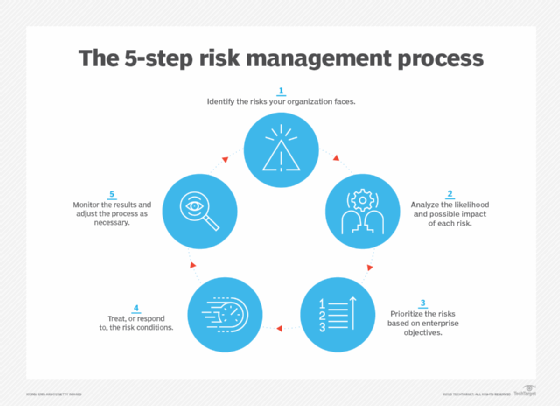Navigating the Complexities: Understanding the Importance of Risk Management
Navigating the Complexities: Understanding the Importance of Risk Management
Blog Article
Discovering the Importance of Risk Management for Effective Decision-Making Techniques
In the detailed world of organization, Risk Management arises as an essential consider the decision-making procedure. The ability to recognize potential dangers and opportunities, and plan as necessary, can mean the distinction between success and failing. With tools such as SWOT and PESTEL, companies are geared up to make enlightened options, cultivating resilience and adaptability in an ever-changing environment. Wondering exactly how this works? Allow's unpack the dynamics additionally.
Comprehending the Principle of Risk Management
Risk Management, an essential element in decision-making, is frequently misconstrued or oversimplified. Risk Management includes structured and self-displined methods, utilizing information and insightful assessments. From monetary unpredictabilities, lawful responsibilities, strategic Management mistakes, to accidents and all-natural calamities, it deals with different risks - importance of risk management.
The Function of Risk Management in Decision-Making Processes
In the world of tactical planning and company operations, Risk Management plays an integral duty in decision-making procedures. Risk Management therefore becomes an essential tool in decision-making, aiding leaders to make informed selections based on an extensive understanding of the threats entailed. Risk Management offers as an essential element in the decision-making processes of any kind of company.

Just How Risk Management Enhances Strategic Preparation
In the context of calculated preparation, Risk Management plays a crucial duty. Launching with the recognition of possible dangers, it additionally includes the execution of Risk mitigation measures. The role of Risk Management is not fixed yet vibrant, as it demands consistent surveillance and adjusting of methods.
Determining Potential Risks

Executing Risk Mitigation
Having actually developed the importance of determining potential dangers, the next action is to check out Risk reduction. This procedure includes establishing and applying approaches to take care of recognized threats properly. It is a crucial aspect of strategic preparation as it boosts decision-making by decreasing possible unfavorable results. Risk mitigation strategies can vary from Risk evasion, Risk transfer, to run the risk of reduction. Each approach needs to be customized to the certain Risk, considering its possible effect and the company's Risk tolerance. Efficient Risk mitigation requires a deep understanding of the Risk landscape and the potential impact of each Risk. This understanding makes it possible for organizations to focus on threats and designate resources effectively, guaranteeing that the most substantial hazards are resolved initially.
Tracking and Adjusting Methods
Though Risk reduction is a crucial action in tactical preparation, constant surveillance and modification of these methods is equally crucial. This ongoing process permits organizations to recognize new threats and reassess existing ones, ensuring the implemented approaches remain reliable in the ever-changing organization atmosphere. It also gives a chance to assess the success of the Risk Management steps, enabling changes to be made where required, additional boosting strategic planning. Efficient tracking and change require using analytics and essential performance indications (KPIs) to gauge effectiveness. These tools give valuable data-driven understandings that can educate calculated decision-making. As a result, surveillance and changing Risk Management approaches is an essential component for improving an organization's resilience and critical preparation.
Case Researches: Effective Risk Management and Decision-Making
On the planet of service and financing, effective Risk Management and decision-making frequently work as the pillars of prosperous business. One such entity is a multinational oil business that Our site minimized financial loss by hedging against rising and fall oil prices. In one more instance, a technology startup thrived by recognizing and approving high-risk, high-reward approaches in an unstable market. A global bank, confronted with governing unpredictabilities, successfully navigated the circumstance through proactive Risk analysis and vibrant decision-making. These situations highlight the worth of sharp Risk Management in decision-making processes. It is not the lack of Risk, but the Management of it, that commonly sets apart effective business from not successful ones. These instances underscore the critical role of Risk Management in tactical decision-making. importance of risk management.
Tools and Strategies for Effective Risk Management
Navigating the detailed maze of Risk Management requires the ideal collection of strategies and tools. These devices, such as Risk registers and warm maps, help in identifying and examining possible risks. Methods consist of both quantitative techniques, like level of sensitivity evaluation, and qualitative methods, such as SWOT evaluation. These aid in prioritizing dangers based upon their potential effect and chance. Risk reaction methods, a key component of Risk Management, entail accepting, avoiding, moving, or mitigating threats. Monitoring and managing dangers, with normal audits and reviews, guarantee that the approaches stay reliable. With these strategies and devices, decision-makers can navigate the facility landscape of Risk Management, therefore promoting informed and efficient decision-making.
Future Fads in Risk Management and Decision-Making Techniques
As we discover the large landscape of Risk Management, it comes to be obvious that the devices and strategies used today will certainly continue to develop. The principle of Risk society, where every participant of an organization is conscious and involved in Risk Management, will certainly obtain extra prominence. These trends declare an even more aggressive and inclusive strategy towards Risk Management and decision-making.
Verdict

Risk Management hence comes to be a vital tool in decision-making, aiding leaders to make informed choices based on a thorough understanding of the dangers involved. Risk mitigation approaches can vary from Risk avoidance, Risk transfer, to run the risk of decrease (importance of risk management). Reliable Risk reduction needs a deep understanding of the Risk our website landscape and the prospective influence of each Risk. Risk feedback strategies, a key part of Risk Management, include approving, preventing, transferring, or mitigating threats. The concept of Risk culture, where every participant of an organization is mindful and included in Risk Management, will certainly acquire more prestige
Report this page